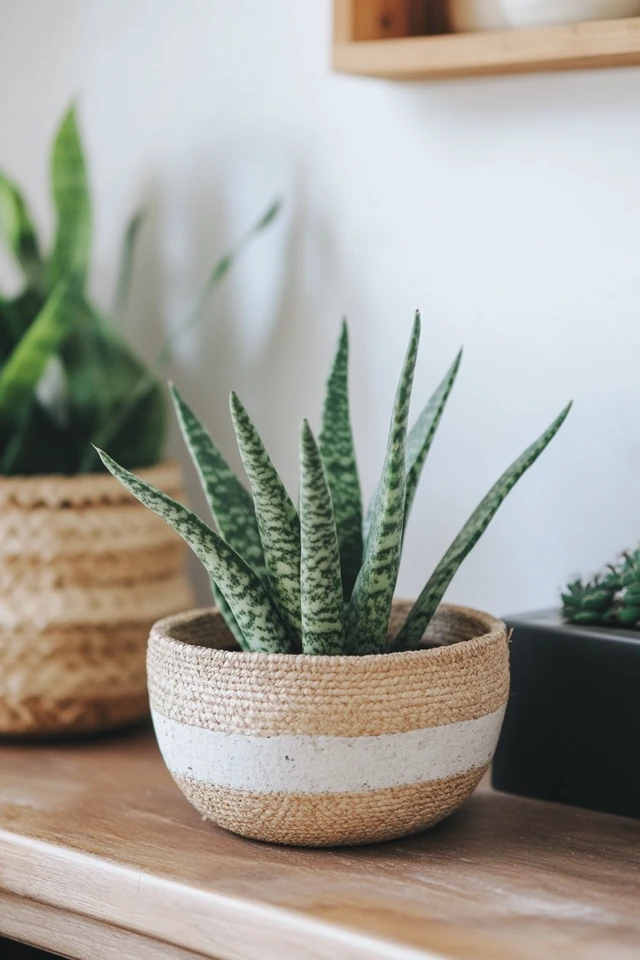Minimalist and rustic styles may seem like polar opposites—one celebrates simplicity and clean lines, while the other thrives on warmth, texture, and natural elements. However, when blended thoughtfully, these two styles create a harmonious balance that feels cozy yet uncluttered, modern yet grounded.
I first fell in love with this fusion of styles when I helped a friend redesign their countryside home. They wanted a space that felt contemporary yet embraced the charm of the rustic surroundings. By blending minimalist design principles with rustic materials and textures, we created a home that was simple, serene, and filled with character. It taught me that when done right, the minimalist-rustic style can be incredibly versatile and timeless.
If you’re ready to combine the clean simplicity of minimalism with the warmth of rustic charm, here are some of the best tips to get started.
Why Combine Minimalist and Rustic Styles?
- Timeless Aesthetic: The mix of modern simplicity with rustic charm creates a look that never goes out of style.
- Warmth and Serenity: Rustic elements bring warmth, while minimalism keeps the space calm and uncluttered.
- Versatility: This combination works in a variety of settings, from urban apartments to country homes.
- Sustainability: Rustic design often incorporates reclaimed and natural materials, aligning with minimalism’s eco-conscious values.
1. Start With a Neutral Color Palette
Why It Works:
Neutral tones like white, beige, gray, and soft earth tones create a seamless base that ties minimalist and rustic elements together.
How to Do It:
- Use white or off-white walls as a backdrop to let rustic textures stand out.
- Add warmth with wood tones, soft browns, and muted greens.
- Incorporate small accents in black or charcoal for contrast.
Pro Tip: Stick to a monochromatic or analogous color palette to maintain cohesion between the two styles.
2. Incorporate Natural Materials
Why It Works:
Rustic design thrives on organic materials like wood, stone, and leather, which complement the clean simplicity of minimalism.
How to Do It:
- Use reclaimed wood for furniture, beams, or accent walls.
- Add a stone fireplace or stone tiles for texture and warmth.
- Incorporate natural fabrics like linen, jute, and wool in textiles.
Pro Tip: Choose materials with minimal finishes to emphasize their natural beauty and maintain a minimalist look.
3. Focus on Clean Lines
Why It Works:
Minimalism is all about clean, unadorned lines, which can ground the rougher, more textured elements of rustic style.
How to Do It:
- Opt for modern furniture with simple silhouettes, like a rectangular dining table or streamlined sofa.
- Use open shelving with clean edges to showcase rustic decor like pottery or woven baskets.
- Pair rustic wood with sleek metal frames for a modern-rustic contrast.
Pro Tip: Avoid overly ornate or decorative furniture to keep the look cohesive and uncluttered.
4. Layer Textures Thoughtfully
Why It Works:
Layering textures adds depth and warmth to minimalist spaces while enhancing the tactile appeal of rustic elements.
How to Do It:
- Pair a soft linen sofa with a chunky knit throw blanket.
- Use a jute or sisal rug under a reclaimed wood coffee table.
- Add woven baskets, ceramic vases, or textured pillows for subtle accents.
Pro Tip: Stick to a limited number of textures to avoid overwhelming the minimalist aesthetic.
5. Embrace Imperfection
Why It Works:
Rustic design celebrates the beauty of imperfections, which adds character to the clean and orderly feel of minimalism.
How to Do It:
- Incorporate furniture with visible wood grain, knots, or natural distressing.
- Use hand-thrown pottery or handmade decor for a personal touch.
- Showcase the patina of aged metals like copper or brass.
Pro Tip: Balance imperfections with clean surfaces, like a polished concrete floor or smooth white walls, for contrast.
6. Keep Decor Minimal and Purposeful
Why It Works:
Minimalism’s “less is more” philosophy prevents rustic spaces from feeling cluttered or chaotic.
How to Do It:
- Display only a few well-chosen decor items, like a single vase on a reclaimed wood table.
- Choose functional decor, such as woven storage baskets or a sleek table lamp.
- Use negative space intentionally to let rustic elements shine.
Pro Tip: Rotate seasonal decor, such as greenery or textiles, to keep the space fresh and uncluttered.
7. Combine Modern and Rustic Lighting
Why It Works:
Lighting plays a crucial role in tying minimalist and rustic styles together.
How to Do It:
- Use pendant lights with industrial or minimalist designs, such as black metal or glass shades.
- Add warmth with rustic lamps or lanterns in wood or wrought iron finishes.
- Incorporate soft, ambient lighting like string lights or candles for a cozy feel.
Pro Tip: Choose lighting with simple shapes to maintain a clean aesthetic.
8. Introduce Greenery and Natural Accents
Why It Works:
Plants and greenery soften minimalist interiors while enhancing the organic feel of rustic design.
How to Do It:
- Place a potted plant, like a fiddle-leaf fig or monstera, in a corner.
- Use dried flowers or branches in ceramic or glass vases.
- Add small succulents or herbs to open shelves or windowsills.
Pro Tip: Stick to neutral or earthy planters to keep the look cohesive.
9. Mix Rustic Furniture With Modern Accessories
Why It Works:
Combining rustic furniture with minimalist accents creates a balanced, curated look.
How to Do It:
- Pair a reclaimed wood dining table with sleek, modern chairs.
- Use a rustic bench at the foot of a minimalist bed.
- Add a modern mirror or artwork above a rustic console table.
Pro Tip: Focus on quality over quantity—each piece should feel intentional and contribute to the overall design.
10. Anchor the Space With a Minimalist Rug
Why It Works:
A simple, neutral rug grounds the room and ties together rustic and minimalist elements.
How to Do It:
- Choose a solid-colored or lightly textured rug in natural fibers like wool or jute.
- Use a muted patterned rug, such as stripes or tone-on-tone designs, for subtle interest.
- Place the rug beneath key furniture pieces, like the sofa or dining table, to define the space.
Pro Tip: Avoid bold colors or busy patterns that can detract from the minimalist aesthetic.
Picture Gallery
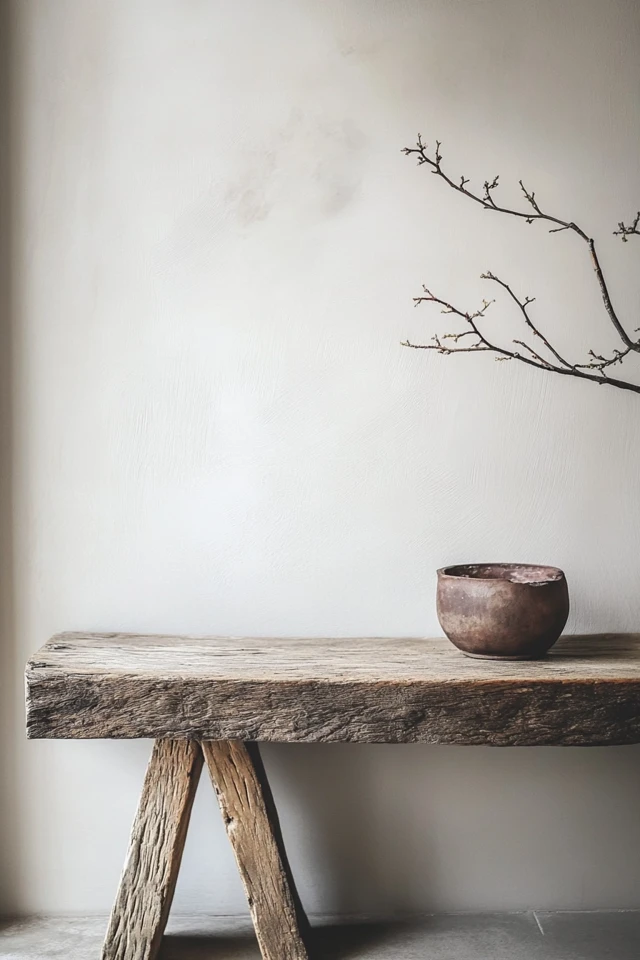
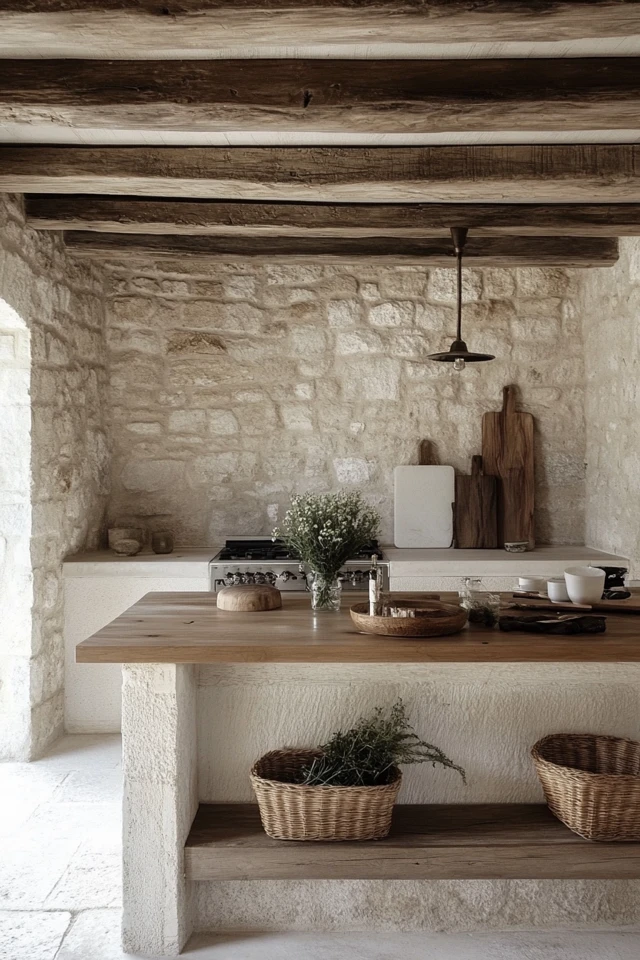
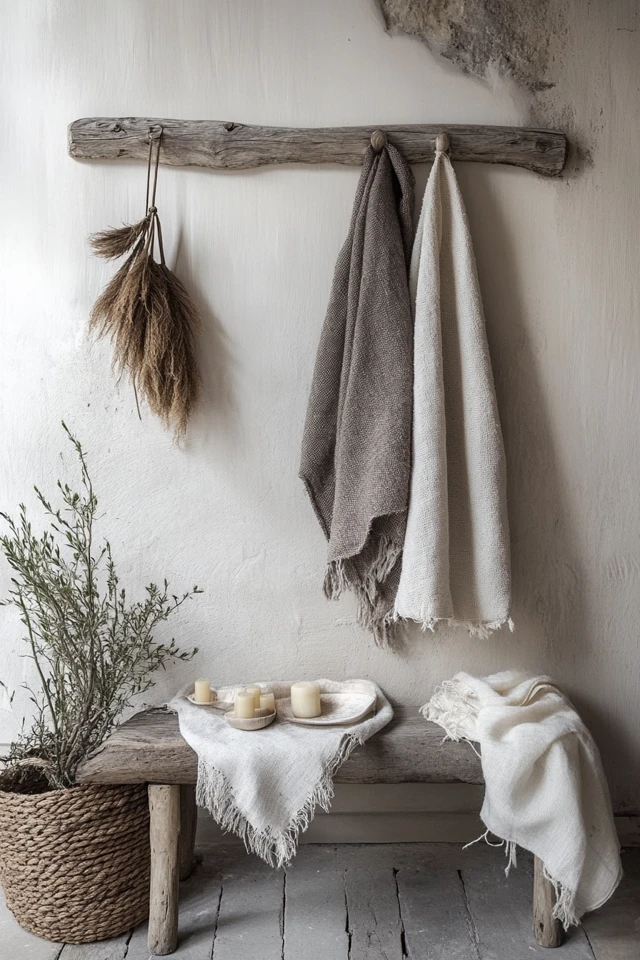
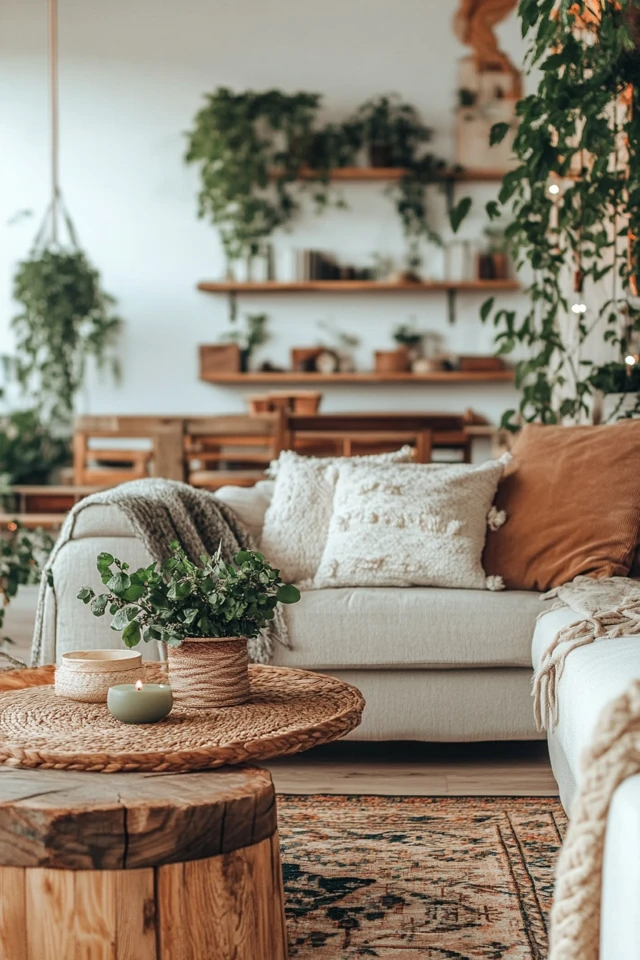
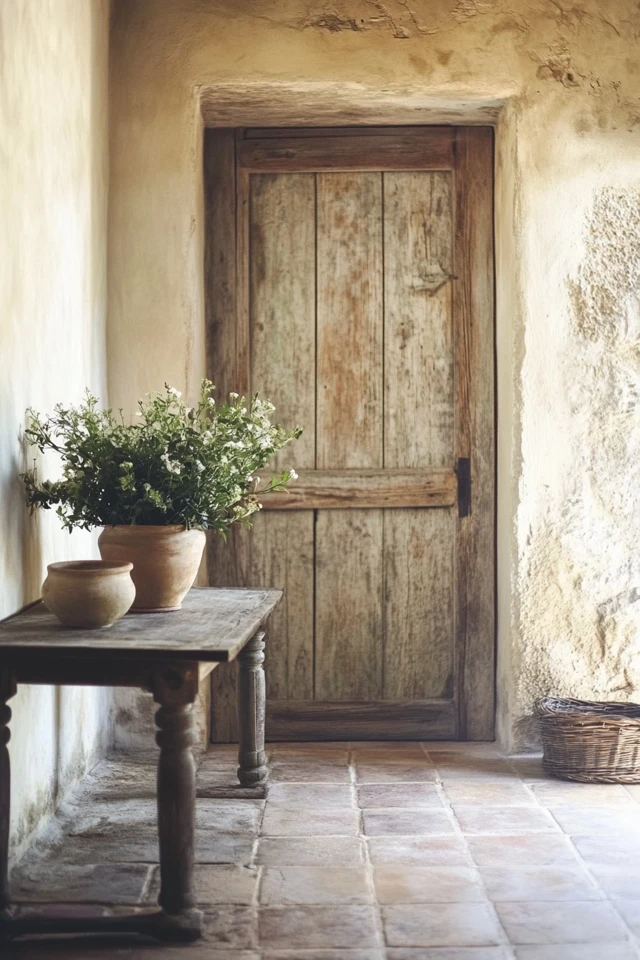
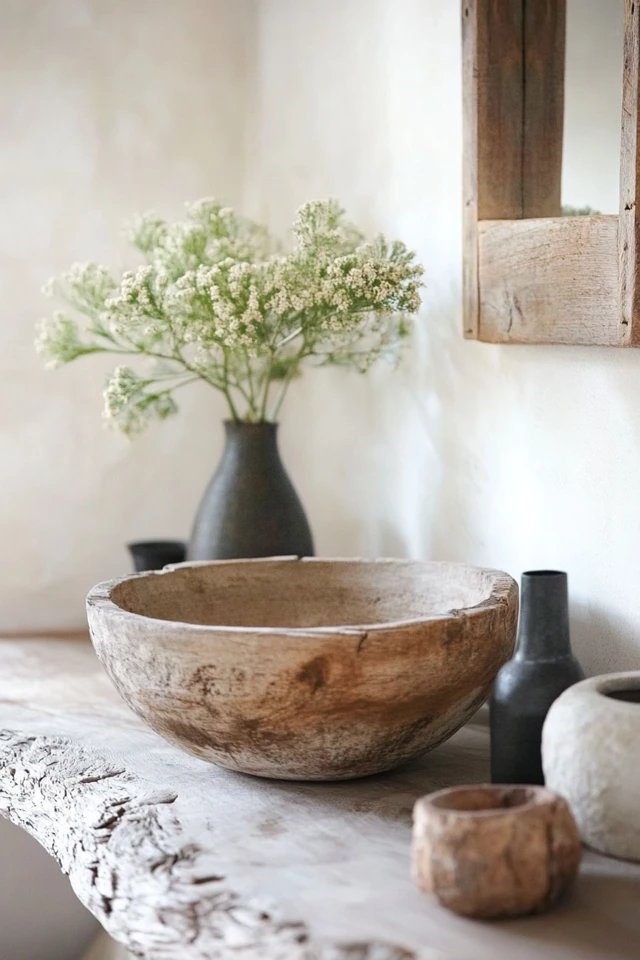

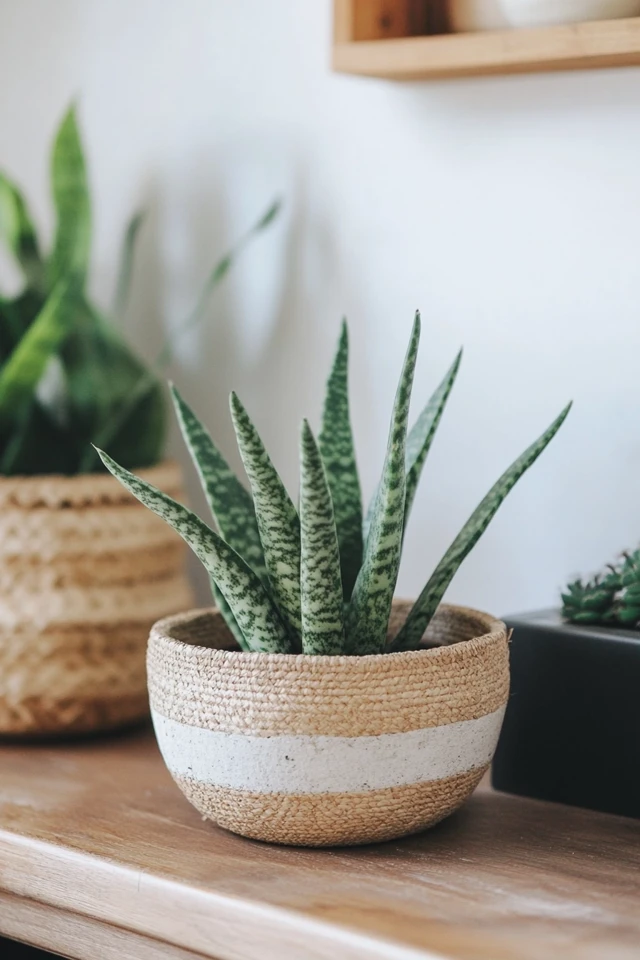
Conclusion
Combining minimalist and rustic styles is all about finding the perfect balance between simplicity and warmth. By focusing on neutral palettes, natural materials, clean lines, and purposeful decor, you can create a space that feels both serene and inviting.
The beauty of this design style is its versatility—it works in modern city apartments, rural homes, and everything in between. With these tips, you’ll be able to seamlessly blend the best of both worlds and enjoy a timeless, harmonious space that reflects your personal style.
FAQs
1. Can minimalist and rustic styles work in small spaces?
Absolutely! Focus on neutral colors, multifunctional furniture, and light textures to keep the space feeling open and uncluttered.
2. What’s the best color palette for a minimalist-rustic interior?
Stick to neutral tones like white, beige, gray, and earthy colors like brown or muted green. These create a cohesive and calming look.
3. How can I add rustic charm without overwhelming the minimalist aesthetic?
Incorporate one or two rustic statement pieces, such as a reclaimed wood table or a stone accent, and keep the rest of the decor simple.
4. Are rustic accessories too bulky for minimalism?
Not necessarily. Choose lightweight or understated rustic decor, such as woven baskets, ceramic vases, or small wooden accents.
5. How do I prevent my space from looking too cold or sterile?
Add warmth with textures like linen, wool, or jute, and include natural elements like wood, plants, or soft lighting.

